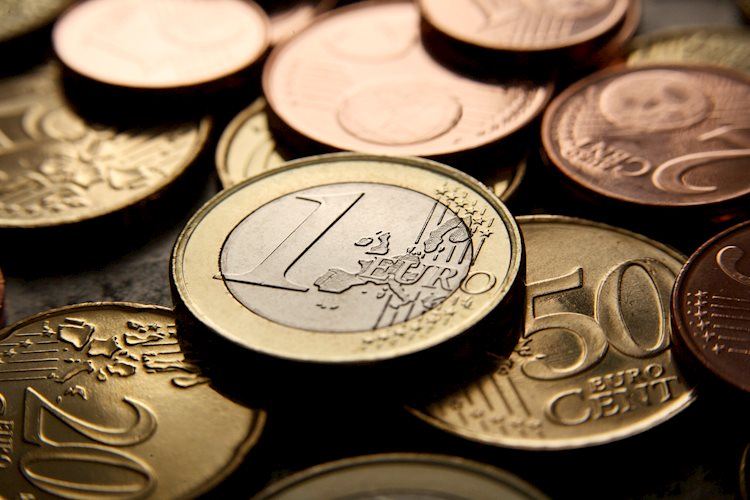- The Euro regains the smile against the US Dollar.
- European stocks open Thursday’s session in a mixed tone.
- ECB President Christine Lagarde speaks later in the session.
The Euro (EUR) manages to generate some upside traction against the US Dollar (USD), motivating EUR/USD to attempt a tepid bounce to the 1.0860 zone on Thursday.
The Greenback alternates gains with losses around 104.40 when tracked by the USD Index (DXY) amidst declining US yields across the board and firmer market chatter around the start of interest rate cuts by the Federal Reserve (Fed) at some point in the summer of 2024.
Speculation about potential Fed rate cuts has been magnified following weaker-than-estimated inflation measures (CPI and PPI) published earlier in the week.
There is no macro data in the domestic calendar, but ECB President Lagarde will speak at an event in Frankfurt.
Across the ocean, weekly Initial Jobless Claims are due along with the Philly Fed Manufacturing Index, Industrial Production, and the NAHB Housing Market Index.
Daily digest market movers: Euro picks up pace as Dollar deflates
- The EUR regains upside impulse against the USD.
- US and German yields trade on the defensive on Thursday.
- Market participants speculate that the Fed could cut rates in H1 2024.
- Investors favour a protracted pause by the ECB.
- Rumours of FX intervention keep gyrating around USD/JPY.
- ECB’s Andrea Enria, Luis De Guindos and Christine Lagarde speak later.
- US weekly Initial Claims and Philly Fed index take centre stage.
- Australia saw a strong labour market report in October.
Technical Analysis: Euro looks at potential test of 1.0945
EUR/USD advances modestly on Thursday, returning at the same time to the upper end of the recent range.
The November peak of 1.0887 (November 14) emerges as the next target of note for EUR/USD prior to the weekly high of 1.0945 (August 30) and the psychological level of 1.1000. The breakout of this area might pave the way for a visit to the August top of 1.1064 (August 10) and another weekly peak of 1.1149 (July 27), all preceding the 2023 high of 1.1275 (July 18).
Occasional bouts of weakness may cause the pair to test temporary support at the 55-day Simple Moving Average (SMA) at 1.0639, before the weekly low of 1.0495 (October 13) and the 2023 low of 1.0448. (October 15).
Looking at the bigger picture, the pair’s outlook should continue positive as long as it remains above the 200-day SMA at 1.0803.
Euro FAQs
The Euro is the currency for the 20 European Union countries that belong to the Eurozone. It is the second most heavily traded currency in the world behind the US Dollar. In 2022, it accounted for 31% of all foreign exchange transactions, with an average daily turnover of over $2.2 trillion a day.
EUR/USD is the most heavily traded currency pair in the world, accounting for an estimated 30% off all transactions, followed by EUR/JPY (4%), EUR/GBP (3%) and EUR/AUD (2%).
The European Central Bank (ECB) in Frankfurt, Germany, is the reserve bank for the Eurozone. The ECB sets interest rates and manages monetary policy.
The ECB’s primary mandate is to maintain price stability, which means either controlling inflation or stimulating growth. Its primary tool is the raising or lowering of interest rates. Relatively high interest rates – or the expectation of higher rates – will usually benefit the Euro and vice versa.
The ECB Governing Council makes monetary policy decisions at meetings held eight times a year. Decisions are made by heads of the Eurozone national banks and six permanent members, including the President of the ECB, Christine Lagarde.
Eurozone inflation data, measured by the Harmonized Index of Consumer Prices (HICP), is an important econometric for the Euro. If inflation rises more than expected, especially if above the ECB’s 2% target, it obliges the ECB to raise interest rates to bring it back under control.
Relatively high interest rates compared to its counterparts will usually benefit the Euro, as it makes the region more attractive as a place for global investors to park their money.
Data releases gauge the health of the economy and can impact on the Euro. Indicators such as GDP, Manufacturing and Services PMIs, employment, and consumer sentiment surveys can all influence the direction of the single currency.
A strong economy is good for the Euro. Not only does it attract more foreign investment but it may encourage the ECB to put up interest rates, which will directly strengthen the Euro. Otherwise, if economic data is weak, the Euro is likely to fall.
Economic data for the four largest economies in the euro area (Germany, France, Italy and Spain) are especially significant, as they account for 75% of the Eurozone’s economy.
Another significant data release for the Euro is the Trade Balance. This indicator measures the difference between what a country earns from its exports and what it spends on imports over a given period.
If a country produces highly sought after exports then its currency will gain in value purely from the extra demand created from foreign buyers seeking to purchase these goods. Therefore, a positive net Trade Balance strengthens a currency and vice versa for a negative balance.
